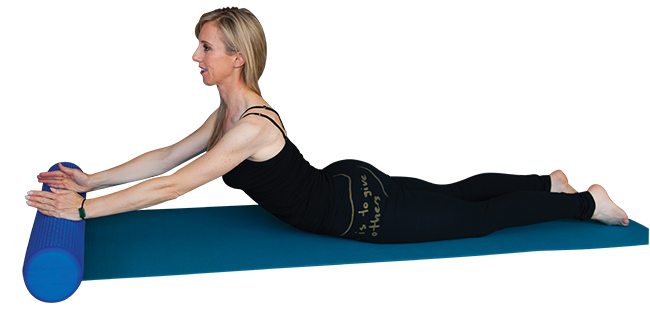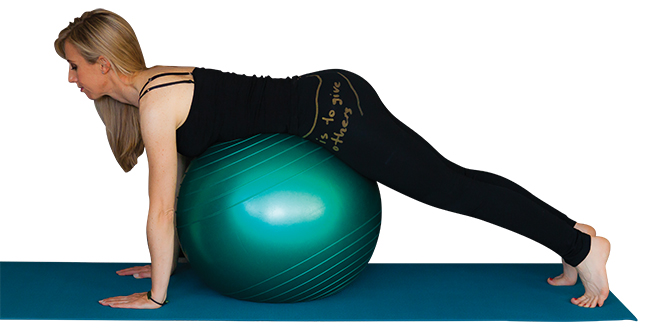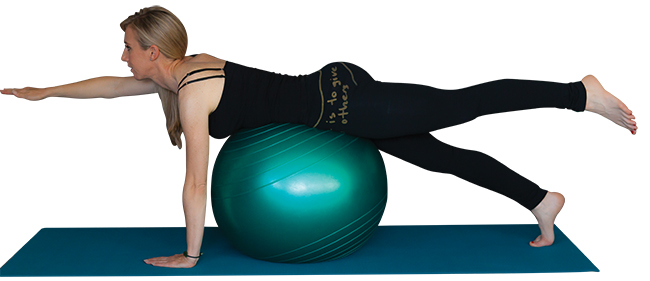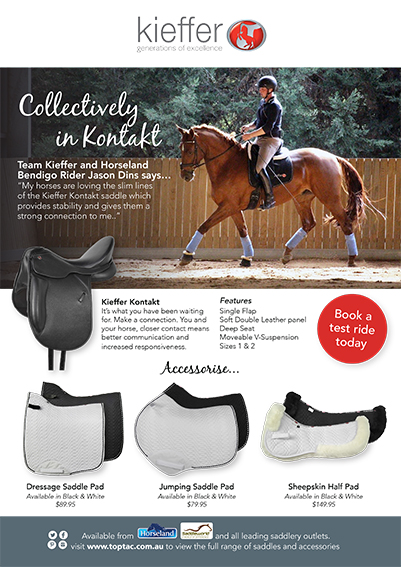With Rebecca Ashton
This month we continue on our journey of evenness of the torso. Where last month we looked mainly at the front of the body, working predominantly the abdominals, this month we will look at the back.
As dressage riders, we require our spine to remain in a neutral position where all the vertebrae are evenly stacked, one upon the other. We need to maintain this dynamic balance as the horse moves under us.
Podhajsky is clear on how he wants the rider’s back. It must be, “…upright with the small of the back braced. The spine must not be hollow and the spine must remain supple and flexible. This is necessary to enable the rider to follow all movements of his horse as if he were part of his own body. The back must remain firm and upright to allow the rider to use the small of the back as an aid…”
Seunig explains the aids for the half halt include, “Tightening of the lower back muscles with the seat well down and forward in the saddle. A vertical stretching of the upper body, above the waist.”
A lot of our life is spent in flexion, so strengthening of the back is beneficial for almost everyone. There is no way you can give effective driving aids or half halts without good back strength. When I say strength, I mean strength with suppleness so you can subtly increase or decrease the engagement of the back muscles to convey to the horse if you require him to keep doing what he’s doing or to adjust his balance. We need to be able to not only follow the swing of the horse in the trot, but also the jump in the canter with a soft lower back as well as be able to indicate to the horse that we want him to come back and stay with us when we resist the forward movement with our body. We also have to be able to stay in sync and balance with our horse and make sure we’re not inadvertently telling him to do something we don’t actually want, just because we don’t have the postural strength to stay with him.
Horses (like humans, might I add!) often like to take the easy way out. If they are not requested to go forward, many won’t offer it. Keeping in mind that collection comes from bringing height to an active pace and tipping the horse’s pelvis under him, rather than slowing everything down, we need good back strength so that the horse cannot slow and suck our pelvis backward. Although the legs are also involved with this process, we need our back to act almost like a dam wall that allows the flow of energy forward but not backwards. You always want to have the feeling that two thirds of the horse is in front of you, that is, have them in front of the leg.
We also want our body to remain a little disassociated from our legs so that we can give leg aids without losing our length of spine and balance and also so we can let our back go with the movement with the horse without moving our legs.
The following exercises will help you develop a stronger more functional back, which will also help protect it from injury.
 SWIMMING
SWIMMING
– Find neutral spine, lying on your tummy. (as in “Swan with roller”)
– Add lateral breathing
– Switch on core
Instruction of move:
– Engage your back so to lift your head and all four limbs off the floor but still keeping them parallel to the floor, using your glutes to help lift the legs and shoulders to lift the arms. Keep your knees and elbows straight.
– Lift a diagonal arm and leg higher.
– Lower the limbs and lift the opposite diagonal pair. Keep repeating, taking it only as fast as you can keep your torso still and not swinging from side to side.
If this movement is too strong and you feel straining in your lower back, keep an arm and leg on the ground as you lift the diagonally opposite pair or just move your arms or your legs.
SWAN WITH ROLLER
Find neutral spine, lying on your tummy, lower part of hands resting on roller with the thumbs facing the ceiling, with your tummy slightly lifted. You want to feel that there is a little bird, or something delicate under your tummy that you don’t want to squash, rather than just letting your tummy flop to the floor. This will help to support the back. 
– Find neutral spine, lying on your tummy, lower part of hands resting on roller with the thumbs facing the ceiling, with your tummy slightly lifted. You want to feel that there is a little bird, or something delicate under your tummy that you don’t want to squash, rather than just letting your tummy flop to the floor. This will help to support the back.
– Add lateral breathing
– Switch off global muscles: lower half of body
– Switch on core 
Instruction of move:
– breathe in and roll hands along roller until shoulders are drawn right down
– continue with the in breath as you continue rolling your hands along the roller and lifting the upper body, without straining the back, especially the lower back.
– breathe out and slowly return to start
SUPERMAN OVER THE BALL
This is very similar to swimming, Lifting a diagonal arm and leg off the floor at once, but with the fitball under your pelvis it adds a level of instability. Don’t forget to support with your abs and enjoy the challenge!




